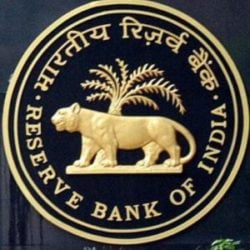RBI proposes Guidelines for Large NBFC
The Reserve Bank of India (RBI) released a draft circular titled ‘Liquidity Risk Management Framework for NBFCs and Core Investment Companies (CICs). RBI after analysing recent developments in NBFC sector proposed a set of guidelines for large Non-Banking Financial Companies (NBFCs) to help them deal with severe liquidity problems and to prevent re-occurrence of IL&FS type of debt crisis. The RBI has invited stakeholder comments on draft by June 14.
Key Highlights of Draft
- Liquidity Coverage Ratio (LCR) regime: In a phased manner, an LCR regime would be introduced in all deposit-taking NBFCs and non-deposit taking shadow banks with an asset size of Rs.5,000 crore and above. The shadow banks are non-bank financial intermediaries that provide services similar to traditional commercial banks but are not subject to regulatory oversight.
- Implementation: To ensure a smooth transition from current to the LCR regime RBI proposed that implementation will be done in a calibrated manner by a glide path over a period of 4 years starting from April 2020 and till April 2024.
- Binding Condition: LCR requirement would be binding on NBFCs from 1 April 2020 with minimum LCR of 60% that will be progressively increased in equal steps till it reaches required level of 100% by April 1, 2024.
- High Quality Liquid Assets (HQLA): An NBFC shall maintain an adequate level of unencumbered (free from debt) HQLA which under a significantly severe liquidity stress scenario can be converted into cash so as to meet its liquidity needs for a 30 calendar-day time horizon. HQLA means liquid assets that can be immediately converted into cash or readily sold at very little or no loss of value or either used as collateral to obtain funds in a range of stress scenarios.
- Asset-Liability Management Committee (ALCO): would consist of NBFC’s top management and should be responsible for ensuring adherence to risk tolerance and limits set by Board and for implementing NBFC’s liquidity risk management strategy.
- Contingency Funding Plan (CFP): should be formulated by NBFC for responding to severe disruptions which may affect NBFC’s ability to fund some or all of its activities in a timely manner and at a reasonable cost.
Reason for Draft Guidelines
- Ever since 2018 when IL&FS crisis erupted banks have been averse in lending to this sector, which has further put NBFC’s in a tight spot. There are rising concerns that NBFCs may run out of money, which will further lead to defaults.
- Many large NBFCs, such as DHFL and Indiabulls Finance came under severe liquidity pressure which compelled them to bring down their reliance on commercial papers (CPs). The CPs is a debt instruments which is issued by companies to raise funds for a time period of up to 1 year.
- As per estimates about Rs.1 lakh crore of commercial papers (CPs) raised by NBFCs from investors will be coming up for redemption in next 3 months. But since NBFCs are cash-strapped, there is a looming fear that they will default on CPs.
- In early May RBI also announced creating special cadre to supervise and regulate financial institutions, including banks and NBFCs.
Month: Current Affairs - May, 2019


